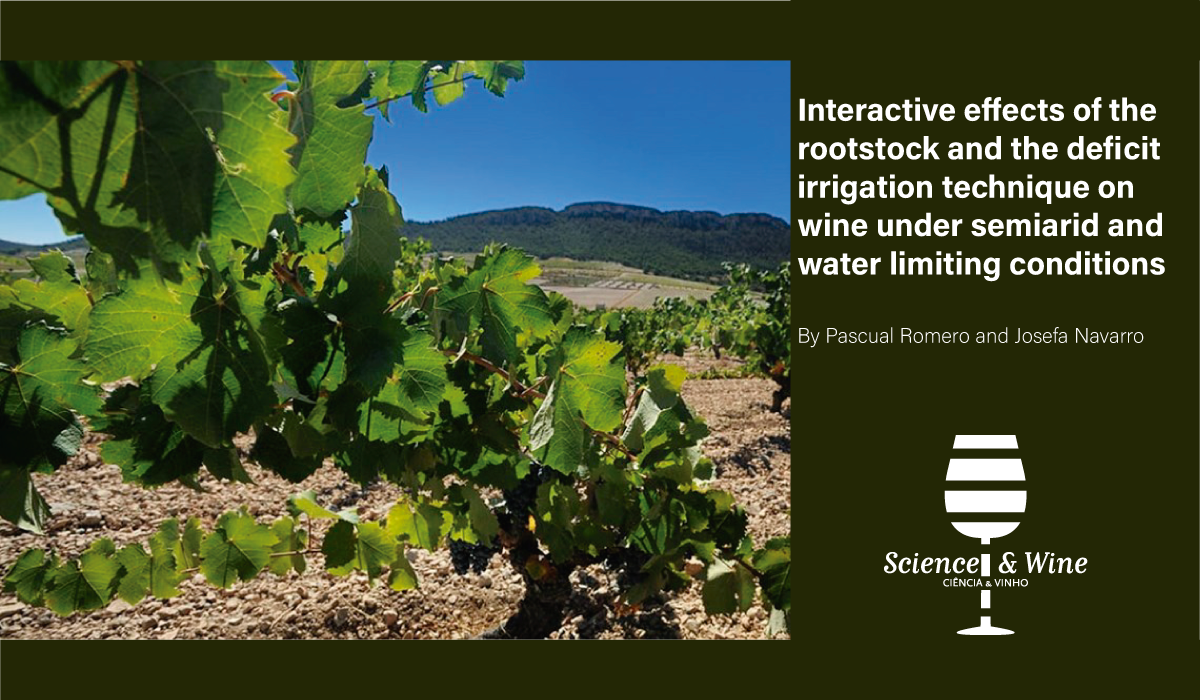By Pascual Romero and Josefa Navarro
According to the climate projections for the middle of this century (2040-2070), it will be in semiarid regions of southern Europe (e.g., SE Spain) where viticulture will need to make the greatest adaptation to climate change (CC), with greater costs to maintain quality and productivity, since they are going to experience more severe water stress and impacts of greater magnitude than other winegrowing areas (Guiot and Cramer, 2016; Resco et al., 2016).
The predicted increase in the evapotranspiration and water needs of the vine as a result of CC will make necessary the application of irrigation water to maintain the sustainability of vineyards and to prevent severe water stress in many winegrowing Mediterranean regions, such as southern Spain (Resco et al., 2016). This future scenario, with more recurrent drought phenomena and heatwaves, will make it more necessary to apply efficient deficit irrigation (DI) strategies and techniques as an adaptation to CC, because the water resources will be increasingly limiting. However, to maintain the long-term sustainability of the vineyards, until the year 2050 and beyond, it will be necessary to apply additional adaptation measures, besides irrigation (Fraga et al., 2018).
To face the risks associated with CC and to achieve environmentally sustainable viticulture, the vine genetic diversity should be taken advantage of to increase the diversity of vineyards and overcome the threats of CC (Wolkovich et al., 2018). In a recent study, we evaluated the interactive effects of the irrigation method (RDI and PRI) and rootstock (invigorating and non-invigorating) on global Monastrell berry and wine quality (Romero et al., 2018, 2019). To achieve this, field-grown mature Monastrell grapevines grafted on five different rootstocks (140Ru, 1103P, 41B, 110R, 161-49C) were subjected to regulated deficit irrigation (RDI) and partial root zone irrigation (PRI) in a semiarid region in SE Spain (D.O. Bullas, Region of Murcia) (Figure 1). The main goal was to analyse the effects of the rootstock (R), irrigation method (IM), and their interaction (R x IM) on the final wine composition, volatile aromatic profile, and wine sensory attributes (Romero et al., 2019). We analysed, over three years, the technological, phenolic, metabolomics-nutraceutical, and aromatic composition of the wines from the different rootstock x irrigation method combinations (R x IM) studied. In addition, a sensory analysis of the wines by panels of expert and consumer tasters was carried out in order to relate the final wine chemical composition and quality characteristics to the sensory attributes, taster preferences, and scores of the wines.
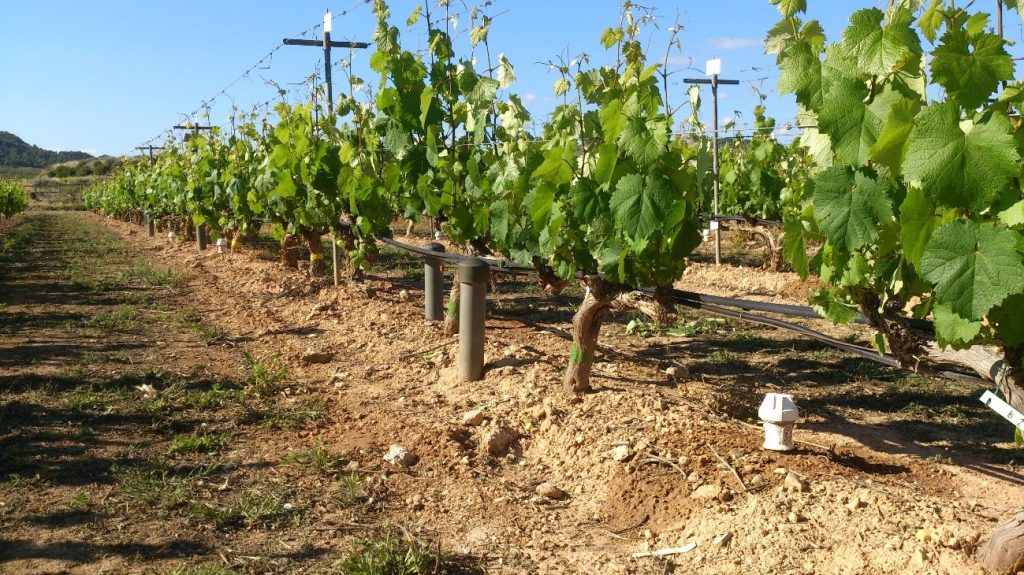
The application of low annual water volumes (85-90 mm year−1) to low vigorous rootstocks (161-49C, 110R) was reflected in wines with higher contents of polyphenolics and alcohol, a higher wine quality index (QIwine), enhanced levels of health-promoting bioactive compounds (flavonols, malvidins) (Table 1), and better organoleptic perception compared to other rootstocks (Romero et al., 2019) (Figure 2). These wines also had lower concentration of aromatic compounds (alcohols and esters). The 140Ru wines, although having a lower polyphenolic concentration and worse color, were also among those rated most highly and preferred by the tasters (Figure 2). These wines had a high content of lactic acid and amino acids, higher tartaric/malic and anthocyanins/tannins ratios and a low concentration of aromatic compounds. Future studies will focuss in the optimization of a specific lower-water volume DI strategy for this vigorous and drought-tolerant rootstock, in order to control the excess vigor and yield and enhance Monratrell berry/wine quality in 140Ru.
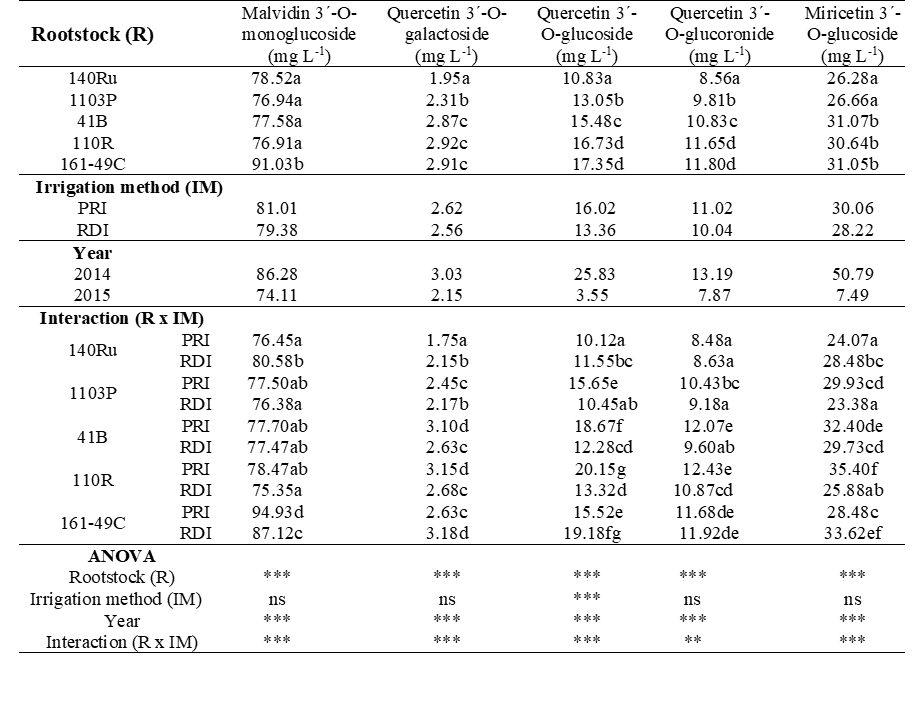
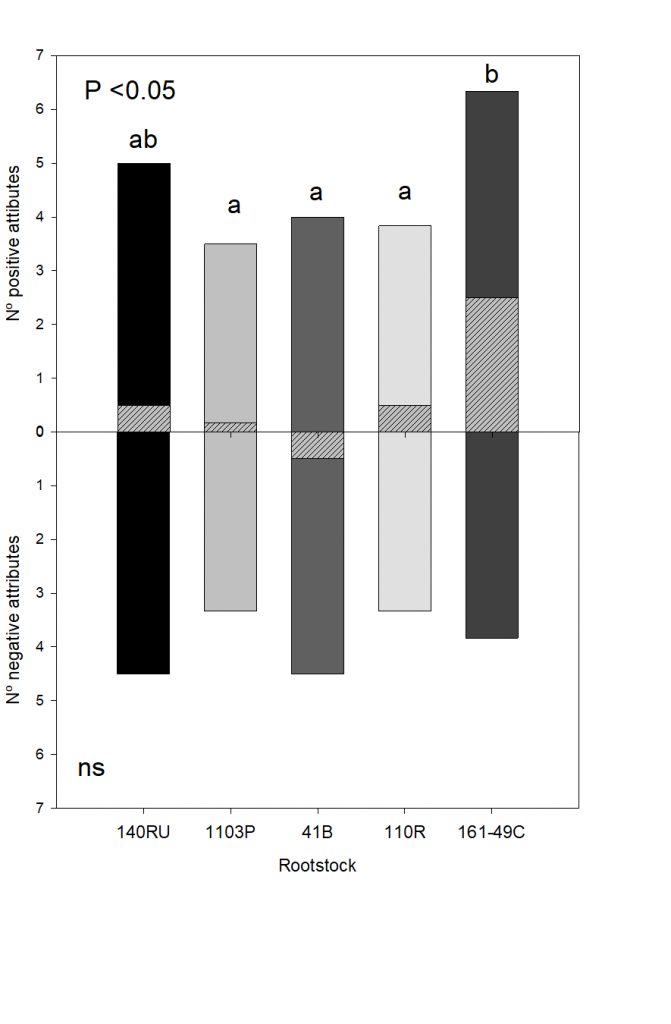
In contrast, 1103P and 41B wines had lower polyphenolic content-nutraceutical value, lower QIwine, tartaric/malic and anthocyanins/tannins ratios, more aromatic compounds, abundant green-vegetable/astringent notes, and more defect-causing compounds. In addition, these wines were also the worst rated in the sensory analysis. Significant positive correlations between the polyphenolic content and alcoholic degree and the score in the wine sensory analysis indicated that the greater the polyphenolic and alcohol contents in the wine, the better valued and more preferred by the tasters it was. PRI method improved wine quality and organoleptic perception for low vigor rootstocks (especially 161-49C), compared to RDI. These wines showed darker color, higher sugar content and nutraceutical potential as well as better sensory perception compared to other rootstock-IM combinations. In contrast, for high vigor rootstocks (1103P, 140Ru), RDI was more beneficial for wine composition, global quality, and sensory perception. Overall, the PRI method also increased the presence of some volatile unpleasant alcohols in the wines. PCA-cluster analysis also showed that 161-49C PRI wines were clearly differentiated from the other rootstock-IM combinations, mainly for their best quality (higher QIwine) and alcohol (PC3) (Figure 3). In contrast, 41B PRI wines were also differentiated (for PC2 and PC3), mainly for their worst quality: higher tannins content, lower QIwine and alcohol and worse sensory evaluation. We recommend the use of low vigor rootstocks (161-49C and R110) and DI techniques with small water volumes to improve Monastrell wine quality and nutraceutical potential, and as a measure to adapt vineyards to climate change under semiarid and water limiting conditions.
Read more about this study at https://doi.org/10.1016/j.agwat.2019.105733
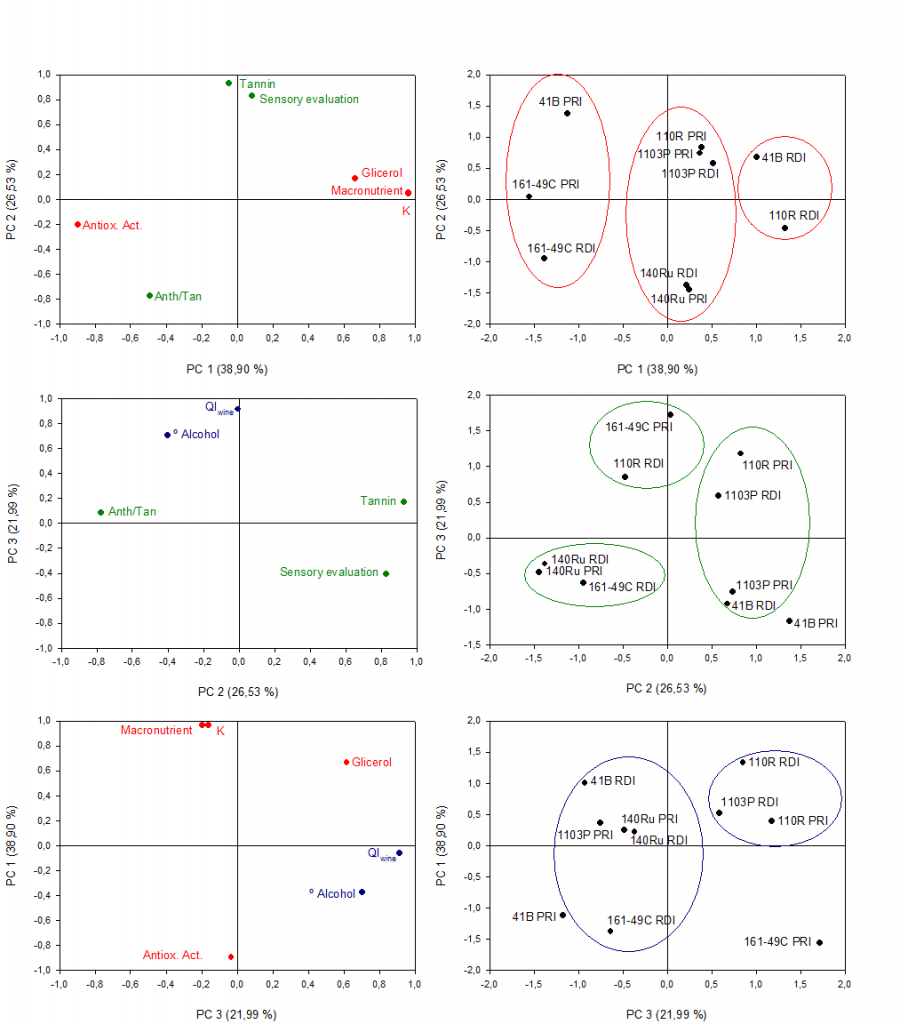

Dr. Pascual Romero is biologist (Murcia University) and he is specialist in soil-plant water relations and stress physiology and he is an expert in the application of several deficit irrigation techniques and strategies in different woody crops, such as almonds, peaches, citrus trees and winegrapes.

Dr. Navarro, degree and PhD in Chemistry at the University of Murcia. During her PhD, carried out at the Centro de Edafología y Biología Aplicada del Segura (CEBAS-CSIC) in Murcia (Spain), she acquired wide experience in the behaviour of plants under abiotic stress. In 2002, she joined the Irrigation and Stress Physiology Group at the Instituto Murciano de Investigación y Desarrollo Agrario y Alimentario (IMIDA) as researcher. Her research interest focus on the agronomical and physiological responses of plants under saline and drought stresses. Currently, her research is focused into the study of different methodologies, technologies and strategies in order to improve the water use efficiency in plants, and the use of waters of different qualities and quantities for plant irrigation. She is working on multiple projects that include from more agronomic to physiological, nutritional, or more basic aspects related with the fruit quality mainly of citrus and wine grape.
She has participated as scientific responsible and team member of numerous research projects. Her research activity is documented by the publication of large amount of articles in scientific peer-reviewed journals, participation in numerous national and international conferences with posters and oral presentations. She is the reviewer of several international scientific journals, research projects, PhD theses co-supervision of master and bachelor students, assistance in practical lessons and seminars. The h-index is equal to 19, and the total citations are 1,039 (22/10/2019). Web of Science ResearcherID Q-6256-2016. ORCID 0000-0002-8811-4576
References
- Fraga, H., García de Cortazar-Atauri, I., Santos, J.A. (2018). Viticultural irrigation demands under climate change scenarios in Portugal. Agri. Water Manag. 196, 66-74.
- Guiot, J., and Cramer, W. (2016). Climate change: The 2015 Paris agreement thresholds and Mediterranean basin ecosystems. Science 354, 465-468.
- Resco, P., Iglesias, A., Bardají, I., and Sotés, V. (2016). Exploring adaptation choices for grapevine regions in Spain. Reg. Environ. Change 16, 979-993.
- Romero, P., Botía, P., and Navarro, J.M. (2018). Selecting rootstocks to improve vine performance and vineyard sustainability in deficit irrigated Monastrell grapevines under semiarid conditions. Agric. Water Manag. 209, 73-93.
- Romero, P. , Botía, P., del Amor, F.M., Gil-Muñoz, R., Flores, P., Navarro, J.M. (2019). Interactive effects of the rootstock and the deficit irrigation technique on wine composition, nutraceutical potential, aromatic profile, and sensory attributes under semiarid and water limiting conditions.
- Wolkovich, E.M., García de Cortazar-Atauri, I., Morales-castilla I., Nicholas K.A., and Lacombe T. (2018). From Pinot to Xinomavro in the world´s future wine-growing regions. Nat. Clim. Change 8, 29-37.

